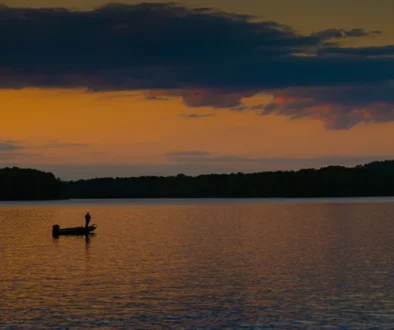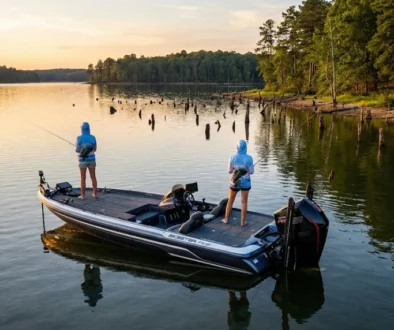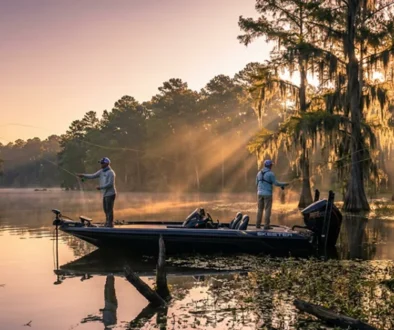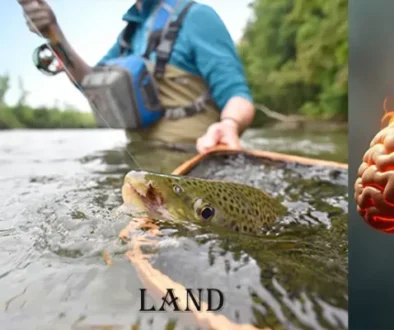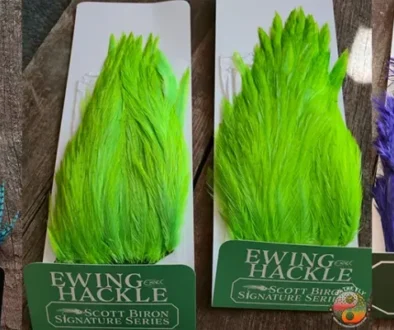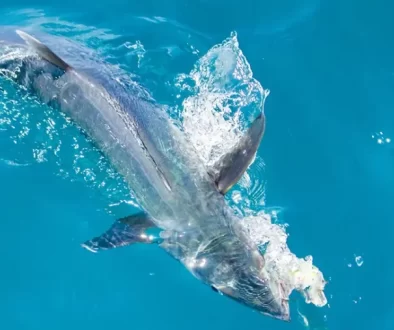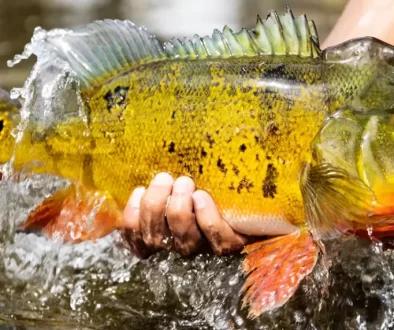Have you ever dreamed of casting a line into crystal-clear waters, feeling the thrill as your fly fishing Tennessee for bass and trout the 19 best spots? The sun dapples through leafy green branches overhead while your fly dances across the rippling surface. It’s more than just about catching fish; it’s an adventure that puts you right in the heart of nature.
I remember my first trip fly fishing Tennessee vividly – armed with little but hope and some basic gear, I found myself immersed in one of America’s most stunning aquatic playgrounds. It proved to be an absolute gem! From chasing smallmouth bass on Caney Fork River to hooking brown trout on South Holston, each experience was unique and exhilarating.
Are you curious if these adventures are within your grasp? Well, hang tight! We’ve got loads more exciting stuff coming up.
Table Of Contents:
- Fly Fishing for Bass and Trout in Tennessee: An Overview
- Consider the Season’s to Fly Fish in Tennessee
- Unraveling the Beauty of the Clinch River for Fly Fishing
- South Holston River: A Paradise for Fly Fishers
- The Hiwassee River: A Serene Escape for Fly Fishing
- Roan Mountain: A Fly Fishing Paradise in Tennessee
- Tactics and Techniques for Successful Fly Fishing in Tennessee
- Focusing on Bass: A Guide to Fly Fishing for Smallmouth Bass in Tennessee
- FAQs in Relation to Fly Fishing for Bass and Trout in Tennessee 19 Best Spot
- In Conclusion of Fly Fishing Tennessee
- Cast a Line Beyond Tennessee
Fly Fishing for Bass and Trout in Tennessee: An Overview
East Tennessee, with its stunning landscapes and rich aquatic ecosystems, is a paradise for anglers. It’s home to over 850 miles of streams ripe for trout fishing, most on public land within the Cherokee National Forest or Great Smoky Mountains National Park. The fishable water offers opportunities to catch brown trout, brook trout, rainbow trout, and even bass.
Imagine standing knee-deep in the cool waters of Watauga River or Doe River, casting your fly line into sparkling clear water while surrounded by breathtaking scenery. Sounds like an angler’s dream come true? For those who seek a dreamy angling experience, this area offers just that with its crystal clear rivers and abundant fish population.
The state also hosts some prime locations for targeting large rainbow trout, such as Caney Fork River, where many an angler has hooked their personal best. And let’s not forget about South Holston, known among local circles as a paradise with close to 6k fish per mile. There are just so many great spots, making it hard to pick a favorite fishing day out.
A couple of great fly rods for fly fishing Tennessee are the Davy Wotton Signature fly rod for nymphing and dry fly fishing. Swing streamers for trout or bass the Denny Rickards Signature fly rod is a good pick. With both these fly rods along on the trip you are well prepared.
Tennessee’s Remarkable Trout Streams
A good chunk of these top-notch fisheries lie within the confines of Monroe County near Tellico River, which is considered one of Tennessee’s finest wild-trout streams due to low fishing pressure coupled with cold-water temperatures creating ideal conditions for native species like brook and brown trout.
The Clinch river flow too holds its own charm, providing a perfect setting, particularly during sulfur hatch season, making Clinch river fly-fishing nothing short of a heavenly experience – plus, if luck favors you, you might end up catching sizable stripers here.
Besides rivers, don’t overlook other waters – Norris Dam area is known famously amongst locals as ‘the tailwater’ and is well-stocked with trout by the Tennessee Wildlife Resources Agency, making it a reliable fishing spot year-round. Don’t be surprised if you see heavy rain causing water to surge over Beaver Dam; this can result in some of the best river fly fishing experiences as large predatory fish like bass and muskie get active.
East Tennessee’s vast aquatic landscapes offer over 850 miles of trout-laden streams, mostly within public lands. Prime locations like the Watauga River, Doe River, and Caney Fork River serve as angling paradises for brown trout, brook trout, rainbow trout and bass. Don’t miss out on Monroe County’s Tellico River – a haven for wild-trout due to ideal conditions or the Clinch river flow known especially during sulfur hatch season. Beyond rivers though, ‘the tailwater’ area near Norris Dam promises reliable fishing experiences all year round.
Consider the Season’s to Fly Fish in Tennessee
Accurately timing your fishing trip can be the key to a successful day, particularly when fly fishing for trout or bass in Tennessee. This is particularly true when you’re fly fishing for trout or bass in Tennessee, where weather conditions and fish behavior vary throughout the year.
Fall, especially October and November, is prime time if you’re after larger brown trout in East Tennessee. These magnificent creatures are more active as they prepare for spawning season, making them easier targets for skilled anglers. You’ll want to make sure your gear is ready to handle these robust fighters.
Layer, Layer with quality outdoor apparel designed by fly fisher’s, hikers, backpackers and list goes on. We spend our lives lost in the expanse of wilderness. Best in Outdoor Apparel Click Here.

Spring: A Trout Bonanza
In contrast with fall’s focus on large browns, springtime – specifically late March through June – brings abundant opportunities across all sizes of rainbow trout near the Smoky Mountains National Park (source). The warming water temperatures awaken an array of insects leading to lively hatches; it’s like ringing a dinner bell underwater. Keep your eyes peeled during this period because not only will rainbows be biting but brook trout will also come out to play.
If river fly fishing appeals more than lake-based action, rivers such as South Holston or Watauga offer bountiful catch prospects too. Spring runoff makes these waters teem with life offering some of the best cold water fisheries nationwide.
Bass Fishing Season: Warm Weather Warriors
While we’ve been singing praises about our favorite spots like Doe River or Tellico River for fantastic spring trout action – let’s not forget about our friends who enjoy battling smallmouth bass on a warm summer afternoon at Caney Fork River.
Warm water temperatures in the summer, particularly July and August, mean it’s prime time for bass fishing. Whether you’re chasing smallmouth on Norris Dam or targeting striped bass at Watauga Lake – summer offers an adrenaline rush unlike any other.
Fly Hatches: A Natural Phenomenon
When deciding the best time to fly fish, hatch activity is a key factor. This is because trout tend to be more active during this period for dry flies and emerger patterns. Nymphing or swinging streamers is a great year round way to fly fish.
Tennessee Fly Fishing Tips:
Timing is crucial for successful fly fishing in Tennessee. October and November are great for catching larger brown trout, while late March through June offers a bonanza of rainbow trout near the Smoky Mountains National Park. Warm summer months bring out smallmouth bass warriors on Caney Fork River. Always consider hatch activity when deciding your best time to fish.
Unraveling the Beauty of the Clinch River for Fly Fishing
The Clinch River, a hidden gem in East Tennessee, is an absolute delight for fly fishing enthusiasts. With its breathtaking landscapes and teeming aquatic life, it’s no wonder why this spot has become a favorite among seasoned anglers.
What makes the Clinch River special? For starters, it boasts some of the best trout fisheries in Tennessee. The Clinch River has an abundance of rainbow and brown trout that are sure to give you a challenge when fishing.
A Look at The Rich Aquatic Life
You’ll find more than just bass and trout here. The river is home to diverse species such as wild brook trout, large rainbow fishable water-dwelling critters like muskie flies and tarpon flies that make each fishing day even more exciting.
This rich biodiversity can be attributed to cold water temperatures released from Norris Dam upstream which create ideal conditions for these species to thrive. This cool climate combined with good food supply results in bigger catches—making every angler’s dream come true.
Fishing Opportunities Year-Round
The great thing about fly fishing on the Clinch River is its year-round accessibility. While heavy rain may occasionally cloud clear waters or increase river flows affecting visibility; overall weather doesn’t pose much hindrance due to well-regulated dam releases maintaining stable conditions.
Getting your valid Tennessee license before heading out will ensure smooth sailing through this beautiful destination.
Savoring A Scenic Experience Alongside Great Catches
In addition to reeling in trophy-sized fishes regularly seen around wild trout streams, you’ll be mesmerized by the beauty of your surroundings. With lush greenery on either side, fishing in the Clinch River feels more like a serene getaway than just an adventure sport.
But that’s not all. If you’re lucky enough, you might even get to witness one of nature’s magical displays – the sulfur hatch. It is truly a sight to behold and adds another layer of charm to this already enchanting river.
A Word To The Wise
Enjoy the tranquil beauty of fly fishing.
Tennessee Fly Fishing Tips:
East Tennessee’s Clinch River is a fly fishing paradise, offering diverse species and year-round accessibility. Its cold waters are teeming with rainbow trout, brown trout, wild brook trout and more – all thanks to the ideal conditions created by Norris Dam upstream. But it’s not just about the catch. The stunning landscapes make each fishing trip feel like a serene getaway. Remember to grab your valid Tennessee license before you start casting & hooking up in this angler’s dream destination.
South Holston River: A Paradise for Fly Fishers
If you’re seeking an angler’s utopia, the South Holston River is the place to be. This waterway boasts an estimated 6,000 fish per mile. That’s right; we aren’t pulling your leg.
This river is home to healthy populations of brown and rainbow trout, making it one heck of a hotspot for anglers. But don’t take our word for it; just check out these Wild Trout Streams.
A Closer Look at the Fishy Residents
Brown trout or rainbow trout? You’ll find both in abundance here. Rainbow trout are known to put up quite the fight once hooked – talk about adrenaline rush. Brownies (that’s angler-speak for brown trout) may be more elusive but catching them offers bragging rights like none other.
The average size might surprise you too – some rainbows have been recorded reaching up to 16 inches long with browns even surpassing that mark.
Fishing Conditions Worth Writing Home About
You won’t need waders year-round thanks to consistent cold-water temperatures maintained by nearby Beaver Dam. The cool waters also ensure optimal conditions for hatches all year round—music to any fly fisher’s ears.
Rainbow and brown trout alike thrive under such circumstances so remember this place when planning your next fishing trip because great Tennessee waters await you here.
Tips from Fellow Anglers Wanting Success on South Holston
We can’t promise instant success but follow these tips gathered from seasoned anglers who’ve navigated through clear water and heavy rain to catch trout on the South Holston River.
Firstly, early summer is a prime time for fly fishing here. That’s when you’ll see the much-anticipated sulfur hatch that drives trout wild. Next, arm yourself with some pheasant tail nymphs – they’re proven favorites of these river fish. Lastly, always respect private property; make sure you’re not trespassing while pursuing your catch. Enjoy and protect our rivers – it’s a shared responsibility.
Discover the thrill of fly fishing at South Holston River, Tennessee’s angler paradise teeming with brown and rainbow trout. Remember to pack your pheasant tail nymphs and plan for early summer – you’ll be in time for the sulfur hatch that makes trout go wild. Respect private property, keep our rivers clean, and get ready for an unforgettable fishing experience.
The Hiwassee River: A Serene Escape for Fly Fishing
Immerse yourself in the tranquility of the Hiwassee River, a fly fishing haven nestled in Tennessee’s lush landscape. With its cool water temperatures and bountiful fish population, it offers an idyllic setting for both novice and experienced anglers.
The Hiwassee River boasts an abundance of rainbow trout, a prized species for fly fishers. But there’s more than just trout here; smallmouth bass are also abundant throughout these waters.
Finding Your Perfect Spot on The Hiwassee
No matter your skill level or preference, you can always find a favorite fishing spot along the Hiwassee. This is thanks to diverse access points dotted across Monroe County where you can comfortably cast your line into clear water teeming with vibrant aquatic life.
Fly fishing on the Hiwassee offers something for everyone, no matter their skill level or preference. Whether you prefer catching large rainbows using a pheasant tail nymph during heavy rain periods or stalking elusive wild brown trout amidst lower fishing pressure times – there’s something for everyone.
Tips For Success When Fly Fishing On The Hiwassee
A successful day at the river requires knowledge about local conditions as well as appropriate gear. Understanding seasonal changes like sulfur hatch patterns will greatly enhance your chances of landing those prized catches. And remember – although flies are crucial tools in any angler’s arsenal, don’t overlook other essentials such as waders and polarized sunglasses to make sure each fishing day turns out great.
If you’re planning on keeping some of your catch though (after taking that trophy picture), be aware that certain regulations apply which vary based on species and season. Always ensure you have a valid Tennessee fishing license before setting out.
Another handy tip is to keep an eye on the water flow levels from Appalachia Dam, which can affect river flows downstream. High flow periods can be tricky for inexperienced anglers but offer opportunities for big catches with the right approach.
The Hiwassee River Beyond Fishing
Take a scenic canoeing or kayaking adventure down the flow of beauty. Enjoy.
Dive into the tranquil waters of Tennessee’s Hiwassee River, a fly fishing paradise for both newcomers and seasoned anglers. Its cool currents teem with rainbow trout and smallmouth bass, making every cast an adventure. Whether you’re drawn to heavy rains or prefer less crowded periods, there’s always a spot on the Hiwassee that fits your style. Success hinges on understanding local conditions and having the right gear – from flies to polarized sunglasses. Keep up-to-date with regulations and water flow levels for optimal experiences.
Roan Mountain: A Fly Fishing Paradise in Tennessee
The allure of Roan Mountain is hard to resist, especially for fly fishing enthusiasts. With its vibrant ecosystem and rich aquatic life, it offers an unparalleled experience that keeps anglers coming back.
Blue Ridge’s Rich Aquatic Ecosystem
Fly fishers are often drawn to areas with diverse aquatic life because they offer a thrilling challenge. The Blue Ridge area around Roan Mountain does not disappoint on this front. Home to various species like brook trout, brown trout, and rainbow trout – it’s no wonder the place has become a favorite fishing spot among locals and tourists alike.
A trip here during early summer or late fall promises the sight of large rainbows dancing at the end of your line while also offering serene views as you wait patiently for a bite. But remember that these water bodies can turn from calm streams into raging rivers after heavy rain – always keep safety first.
The Allure of Carter County for Fly Fishing Adventures
If there was ever an Eden for fly fishermen in Tennessee, then Carter County would be it. Bordered by Doe River on one side and Watauga Lake on another; nature seems to have gone out her way making sure this county becomes any angler’s dream come true.
Besides being home to some fantastic river fly fishing spots like Laurel Fork in Cherokee National Forest where cold water temperatures foster healthy wild trout populations all year round–the region is also known for its sulfur hatch which occurs every springtime providing ample opportunity catch larger-than-life specimens.
The Tennessee Wildlife Resources Agency ensures adequate stock throughout the year, making it a haven for fly fishers.
While Carter County has some popular fishing spots, there are also several lesser-known areas where you can escape the typical fishing pressure. For instance, take a short hike to Beaver Dam in Monroe county or explore Clinch River Fly Fishing near Norris Dam; these hidden gems often offer more tranquility and bigger catches due to lower angler traffic.
Yet…
Roan Mountain and Carter County are Tennessee’s fly fishing hotspots, teeming with aquatic life. With a range of trout species to catch and beautiful landscapes to admire, these areas offer unforgettable angling experiences. But don’t forget safety – rivers can turn rough after heavy rains. Looking for lesser-known spots? Try Beaver Dam or Clinch River Fly Fishing for peaceful escapes.
Tactics and Techniques for Successful Fly Fishing in Tennessee
First things first, you’ll need a valid fishing license. It’s your golden ticket to access the waterways of Tennessee. Now let’s get into those juicy tactics.
Fly Selection: The Pheasant Tail Nymph Affair
The pheasant tail nymph is like that friend who fits right in at any party – adaptable and well-loved by all (especially trout). You see, this versatile fly mimics many types of aquatic insects, making it an irresistible snack for hungry fish.
In rivers such as South Holston or Watauga River where brown trout thrive, they just can’t resist these flashy entrees. But remember. Clear water demands smaller flies; so downsize if needed.
The Magic Hours: Early Summer & Sulfur Hatch Season
Aiming for early summer not only lets you enjoy warm weather but also puts you smack dab in the middle of sulfur hatch season – prime time for river fly fishing. Imagine casting on Doe River under a picturesque Smoky Mountain sunset while countless yellow mayflies flutter above… quite poetic indeed.
Seriously though, when these bugs are active during late afternoon and dusk hours (the magic hours), trout become more aggressive feeders. They rise to the surface with abandon creating ideal conditions to hook both rainbow trout and their elusive cousins – brook trout.
Rain Check? No Thanks.
We anglers love us some overcast skies. Why? Cloud cover can encourage mid-day hatches leading to stellar fishing action even outside ‘magic hours’. Plus heavy rain can also bring big fish out of their hiding spots. Just remember to be cautious as water levels rise and currents strengthen.
High-Pressure Areas: No Pain, No Gain
Fishing pressure is real folks. Popular areas like the Clinch River or Caney Fork might seem crowded but don’t let that deter you. Remember – trout aren’t just finicky eaters; they’re creatures of habit too.
So, even with the pressure of angling, if a place has been constantly giving them food (for instance, from…
)
For successful fly fishing in Tennessee, snag a valid license first. Use versatile flies like the Pheasant Tail Nymph, especially where brown trout swarm such as South Holston or Watauga River. Fish during early summer’s sulfur hatch season for an action-packed experience. Don’t shy away from overcast skies or crowded spots – they might be hiding big catches.
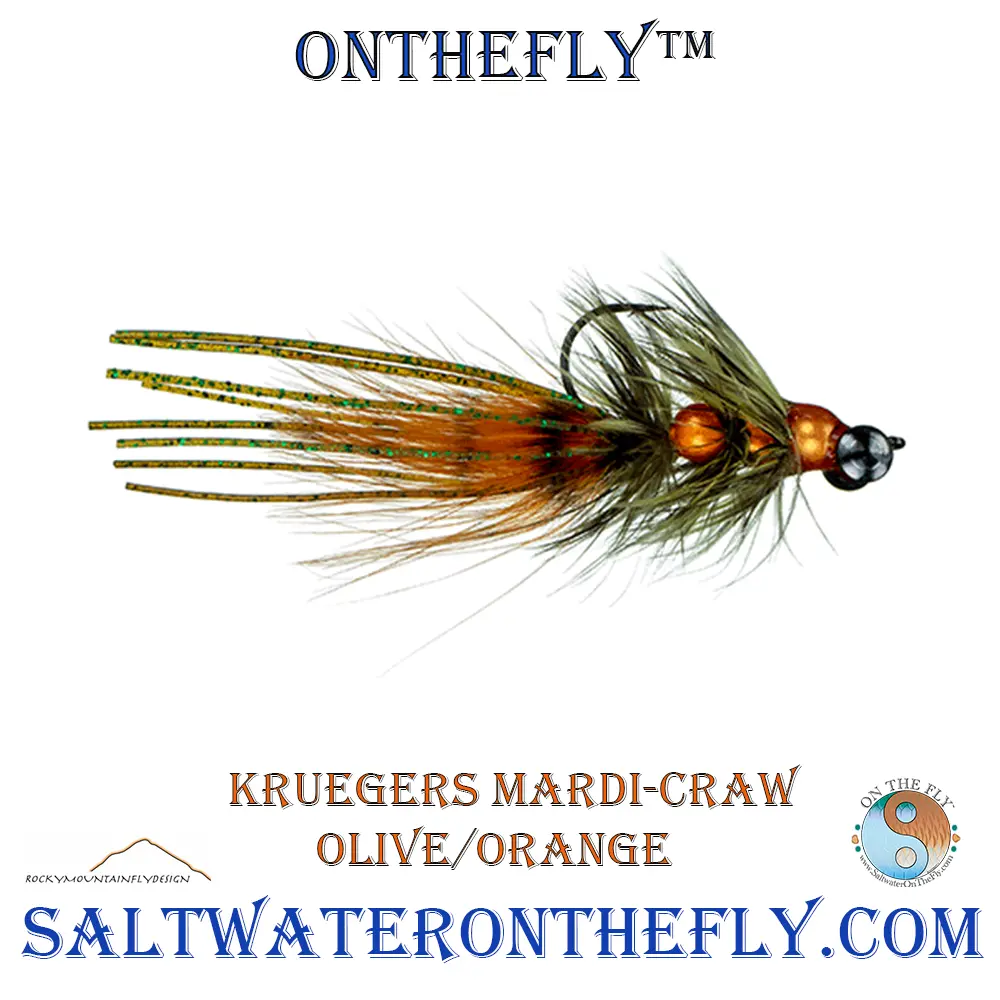
Mardi-Craw’s are a great trout and bass pattern anywhere there are crawfish present. Check out the whole selection of Mardi-Craw’s click here.
Focusing on Bass: A Guide to Fly Fishing for Smallmouth Bass in Tennessee
Let’s cut to the chase, folks. You’re here because you’ve got a burning desire for smallmouth bass fly fishing, and where better than the picturesque landscapes of Tennessee? But don’t fret if you’re feeling a bit green around the gills – we’ll have you reeling them in no time.
Tennessee’s waterways are chock-full of feisty smallmouth bass, or ‘bronzebacks’ as they’re affectionately known among anglers. The clinch river fly fishing scene is especially renowned.
Catching Bronzebacks: Where To Go And When?
To start with your adventure, picking the right spot can be half the battle won. Doe River and Watauga Lake offer prime habitats teeming with smallies that could test even seasoned anglers.
The secret sauce? It’s all about timing. While these finned fighters can be caught year-round, early summer provides optimum conditions when waters warm up and food becomes plentiful.
The Perfect Tackle Box – Gearing Up For Success
No self-respecting angler would hit these waters without their trusty tackle box filled to brim. Now imagine it was possible to lure those elusive bronzebacks like bees drawn towards honey.
You might want to consider adding Pheasant Tail Nymph flies into your arsenal which are known magnets for both trout and bass alike due its irresistible appearance mimicking various nymph species found across rivers of Tennessee including Caney Fork River and Tellico River. Pheasant Tail Nymph flies are a classic choice, known to lure in both trout and bass.
A Taste For The Hunt: Tactics To Land That Trophy Fish
Moving on to the juicy part – landing that trophy fish. Smallmouths are notorious fighters; they’re energetic, unpredictable, and can give you quite a run for your money. It’s time we match their spirit with some cunning of our own.
Think about using sinking lines. They’ll help your fly reach deep waters, where the big smallies are usually hiding. This is especially true for rivers like South Holston and Watauga River.
Craving for smallmouth bass fly fishing? Dive into Tennessee’s waters. Prime spots like Doe River and Watauga Lake are teeming with ‘bronzebacks’. Early summer is the best time, when food abounds. Equip your tackle box with Pheasant Tail Nymph flies – they’re irresistible to trout and bass. Ready to reel in that trophy fish? Match their fighting spirit by using sinking lines, reaching deep where big ones hide.
FAQs in Relation to Fly Fishing for Bass and Trout in Tennessee 19 Best Spot
Where are the native trout streams in Tennessee?
Tennessee’s Cherokee National Forest and Great Smoky Mountains National Park have a plethora of native trout streams. You’ll find them spread over 850 miles.
What is the best time of year for trout fishing in Tennessee?
Fall proves bountiful for large brown trout, particularly in East Tennessee. But late March through June also yields good catches near the Smoky Mountains.
Where are the biggest trout in Tennessee?
The Clinch River and South Holston River are known to house big rainbow and brown trouts due to their rich aquatic ecosystems.
What is the best fly fishing setup for bass?
A light tackle setup with a fast action rod, coupled with floating line or sink tip lines, works well when targeting smallmouth bass on fly in Tennessee.
In Conclusion of Fly Fishing Tennessee
Fly fishing in Tennessee’s rich aquatic playgrounds is a thrilling adventure. You’ve learned about the vibrant ecosystems, best times to fish, and got a sneak peek into some of the top spots for fly fishing for bass and trout in Tennessee’s 19 best spots.
From casting lines on Clinch River to reeling in brown trout at South Holston River or chasing smallmouth bass at Caney Fork River – every experience here has its own unique charm.
You’ve also gained insights into effective strategies, tactics, and regulations needed for successful fly fishing adventures. All that remains now is packing your gear!
The allure of Carter County awaits you with open arms while Roan Mountain promises an unforgettable journey amidst nature’s bounty. So go ahead! It’s time to create your very own Tennessee fly-fishing tale.

